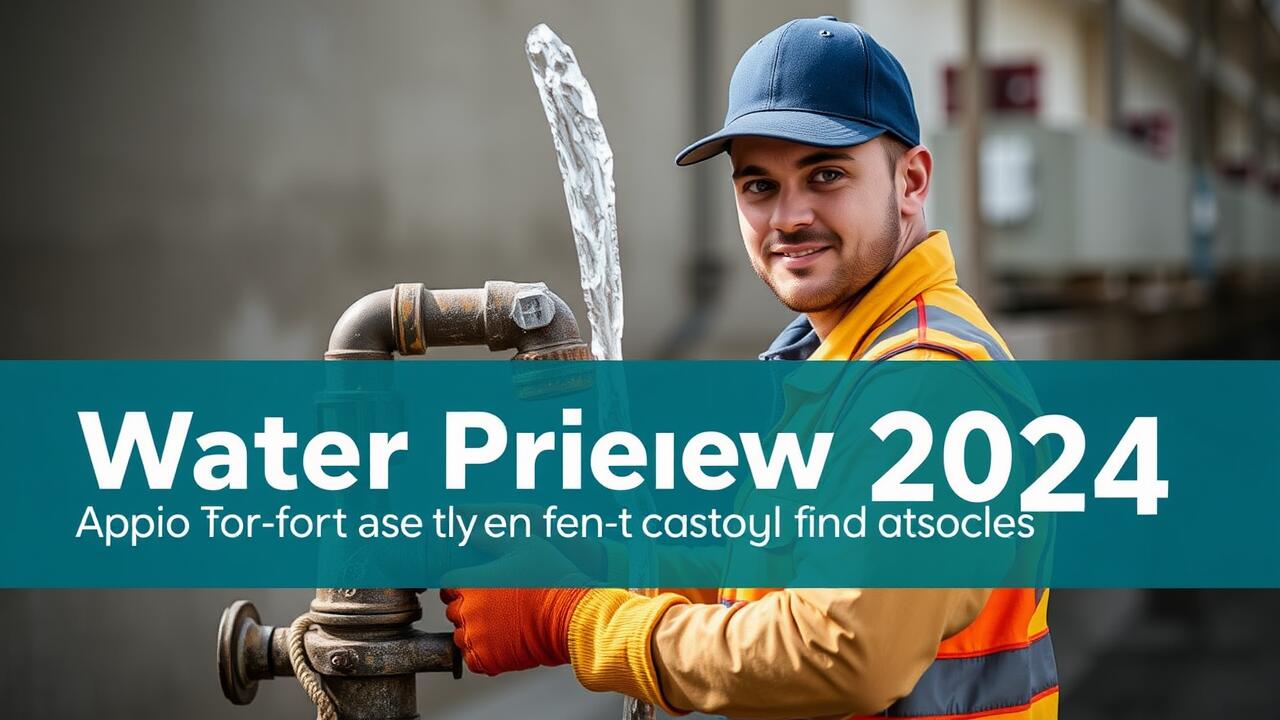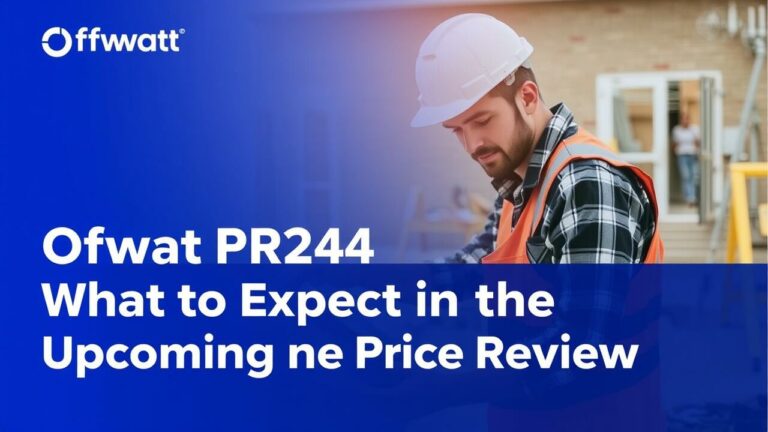Water Price Review 2024 Implications for Customers and Providers
Amidst the escalating clamor of environmental alarm bells, water providers are diving headfirst into a whirlwind of sustainability initiatives, all designed to champion the cause of long-term resource conservation. Picture this: hefty investments in cutting-edge water treatment technologies and infrastructure overhauls that not only slash waste but also supercharge the efficiency of how water flows through our communities. It doesn’t stop there; many providers are forging alliances with local governments and organizations, crafting vibrant public awareness campaigns that shine a spotlight on just how crucial responsible water use is for every resident.
But wait—there’s more! This pivot towards sustainability isn’t merely an afterthought; it’s woven into innovative pricing models that nudge consumers toward reduced consumption while rewarding those who embrace savvy water-saving habits. Think tiered pricing structures that make it sting a bit more for those who guzzle excessively—a clever tactic to motivate users to rethink their habits. These strategies don’t just serve as safeguards for future generations’ access to precious resources; they cultivate a rich culture of sustainability that ripples outward, igniting community engagement and fostering a spirit of environmental stewardship like never before.
Encouraging Responsible Water Use
Awareness about water conservation—it’s not just important; it’s absolutely vital for cultivating a culture where responsible usage becomes second nature for consumers. Imagine educational programs that don’t merely inform but empower individuals and businesses alike with tangible strategies to slash waste drastically! Think about disseminating knowledge on efficient irrigation methods, pinpointing leaks like detectives, or showcasing the myriad benefits of drought-resistant landscaping—this could spark a revolution in sustainable practices. As households and organizations awaken to the realities of their water consumption, they can collectively lower demand, creating ripples of positive impact on both our environment and local resources.
Now consider this: incentives for conservation—they wield remarkable power in nudging people toward responsible behavior! Utility providers have an opportunity here—a chance to introduce tiered pricing structures that reward those who use less with enticingly reduced rates. And let’s not forget rebate programs designed to encourage the installation of water-efficient appliances; these initiatives can ignite motivation among customers to embrace eco-friendly choices wholeheartedly. By championing such incentives, water providers aren’t just promoting conservation—they’re weaving a robust relationship rooted in shared aspirations for sustainability that stands the test of time.
Regional Variations in Pricing
Water pricing in the United States is a curious tapestry, woven with threads of local supply quirks, demand swings, infrastructure demands, and a patchwork of regulatory landscapes. Take regions grappling with drought—here, water costs can skyrocket as scarcity looms large, prompting urgent calls for conservation. In stark contrast, places blessed with abundant freshwater often set their rates lower, favoring accessibility over the push for conservation. This juxtaposition underscores the intricate dance between environmental realities and economic imperatives that shape water prices.
State regulations add another layer to this complex narrative. Some states embrace tiered pricing systems where hefty fees are levied on those who use excessively—an attempt to nudge consumers toward more mindful consumption. Meanwhile, others might lean into flat-rate models that could offer financial relief across the board but fall short of instilling responsible usage habits. The governance structures at play and the socio-economic fabric of communities intricately influence how these pricing strategies unfold, shaping not just consumer behavior but also awareness around shifts in cost dynamics.
Differences Across Various States
Water pricing across the United States is a tapestry woven with threads of complexity and diversity, shifting dramatically from one region to another. Picture this: in lush states like Washington and Oregon, where freshwater flows plentifully, the cost tends to remain refreshingly low. In stark contrast, arid landscapes such as California and Arizona grapple with water scarcity that sends prices soaring into uncharted territories. Urban hubs amplify this dynamic; here, demand surges alongside spiraling costs tied to maintaining intricate delivery networks.
But wait—there’s more! Regulatory frameworks add yet another layer of intrigue in how these pricing structures unfold. Some states embrace tiered pricing models designed to nudge consumers toward conservation—a clever dance between saving resources and managing costs—while others stick resolutely to flat rates regardless of consumption levels. The interplay between public water agencies and private providers further complicates matters; differing operational costs and profit motives create a patchwork quilt of pricing strategies that can bewilder even the savviest consumer. For anyone peering at their water bills or bracing for future hikes, grasping these regional quirks becomes not just useful but essential!
| State | Average Water Price (per 1,000 gallons) | Pricing Model | Key Factors Influencing Price |
|---|---|---|---|
| California | $8.00 | Tiered Pricing | Water scarcity, urban demand |
| Arizona | $6.50 | Flat Rate | Climate, development costs |
| Washington | $3.50 | Flat Rate | Abundant freshwater sources |
| Oregon | $4.00 | Tiered Pricing | Conservation efforts, rainfall |
| Florida | $4.75 | Tiered Pricing | Population growth, climate impacts |
Customer Feedback Mechanisms
Public input is absolutely critical in the complex dance of shaping water pricing policies. When customers are brought into the decision-making whirlwind, it can pave the way for pricing structures that are not just fair but genuinely sustainable. Water providers are increasingly leaning into feedback mechanisms—think surveys, public forums, and snazzy digital platforms—that invite a chorus of voices to share their concerns, experiences, and ideas. This symphony of perspectives ensures that no opinion goes unheard.
The magnitude of incorporating customer feedback is immense—it enhances transparency like a beam of sunlight breaking through clouds! It empowers water providers to make choices steeped in community needs rather than operating in a vacuum. By grounding pricing decisions in real-life customer experiences, they can craft approaches tailored to tackle specific regional hurdles with finesse. Furthermore, regular consultations act like an early warning system; they allow providers to anticipate potential issues before they bubble up to the surface. This creates a collaborative atmosphere aimed at achieving long-term sustainability and efficiency in our precious water usage—an essential goal for all stakeholders involved!
Importance of Public Input in Pricing Decisions
Public participation is absolutely pivotal in the intricate dance of water pricing policies. When customers step into the arena, sharing their unique perspectives and lived experiences, they unleash a torrent of insights—gems that empower utility providers to sculpt pricing strategies that are not just equitable but also strikingly effective. By weaving community engagement into the fabric of decision-making, we ensure that the diverse needs and concerns of various populations don’t just echo in silence; instead, they resonate loudly, fostering an atmosphere brimming with transparency and trust between service providers and the very customers they serve.
Think about it: feedback mechanisms like surveys or public forums open up avenues for dialogue—a dynamic exchange that can spark informed decision-making! Utilities that genuinely prioritize customer input find themselves equipped with a treasure trove of information to craft pricing structures mirroring real water usage patterns intertwined with local conditions. This kind of engagement doesn’t merely scratch the surface; it has the potential to cultivate pricing models that champion conservation efforts, bolster sustainability initiatives, and harmonize beautifully with community expectations.
Future Trends in Water Pricing
In the ever-evolving landscape of water management, emerging technologies are poised to revolutionize the very fabric of water pricing. Picture this: smart meters and cutting-edge data analytics working in tandem, granting utilities a near-omniscient view of consumption patterns—right down to the minute! With these powerful tools at their disposal, providers can craft dynamic pricing models that ebb and flow with actual water availability and usage. This shift creates an intriguing incentive for customers: conserve during those peak demand periods or face steeper costs.
But wait, there’s more! The rise of tiered pricing structures is on the horizon—a promising strategy aimed at fostering equitable water usage across diverse consumer bases. Imagine a system where charges reflect individual consumption levels; it nudges those with higher demands toward using less, all while instilling a sense of responsibility. As public awareness around water scarcity swells like high tide, these innovative pricing frameworks could serve as vital mechanisms—not just for optimizing resource allocation but also for galvanizing community engagement in sustainable practices that resonate far beyond mere conservation efforts.
Potential Innovations in Billing
The rapid evolution of technology is unleashing a wave of groundbreaking billing strategies that might just redefine the landscape of water usage tracking and charging. Imagine smart metering systems, buzzing with real-time data collection capabilities, that empower utilities to dissect consumption patterns with surgical precision. This isn’t merely about boosting efficiency in water management; it’s a brilliant nudge towards consumer empowerment—inviting individuals to keep an eagle eye on their own usage, thereby nurturing a culture steeped in conservation.
But wait, there’s more! Enhanced billing frameworks can embrace tiered pricing models—a clever dance where reduced consumption during peak times earns consumers financial breaks while simultaneously championing sustainability goals. It’s like aligning wallets with eco-friendly intentions!
And then we dive into the realm of mobile apps and online platforms—these are not just tools; they’re bridges connecting customers and water providers in ways previously unfathomable. Picture transparent exchanges bursting forth with user-friendly data presentations: notifications pinging about nearing usage thresholds, friendly reminders for upcoming bills, or alerts for potential leaks lurking beneath the surface.
But hold onto your hats! With artificial intelligence stepping into the spotlight, utilities can dish out tailored recommendations for water-saving techniques curated specifically from individual consumption habits. Such innovations strive to weave a rich tapestry of interaction between water suppliers and their clientele while fervently advocating responsible usage practices—all to foster a sustainable future!
- Enhanced smart metering systems improve real-time data accuracy for better consumption tracking.
- Tiered pricing models incentivize consumers to reduce peak-time usage and save money.
- Mobile apps provide instant access to billing information and consumption data.
- Notifications ensure customers are aware of their usage and remind them of upcoming payments.
- AI-driven insights offer personalized tips for improving water conservation based on individual habits.
- Transparent billing practices build trust and engagement between consumers and water providers.
- Integration of gamification elements in apps to encourage sustainable practices through rewards.
Resources for Understanding Water Pricing
Grasping the nuances of water pricing is no simple feat. It’s a labyrinthine world, teeming with resources aimed at guiding both consumers and providers through its convoluted corridors. Government websites emerge as beacons of clarity, offering crucial insights into local water rates, regulatory frameworks, and sustainability efforts that shape our communities. Meanwhile, environmental advocacy organizations churn out reports and guides that delve deep into the economic ramifications tied to our water usage—a narrative rich in complexity.
Academic institutions aren’t just passive observers; they actively probe the waters (pun intended), conducting research that unveils trends in pricing while shining a light on the myriad factors influencing cost fluctuations along with sustainable practices.
But wait—there’s more! Community forums and consumer advocacy groups act as vibrant arenas for lively debates about all things related to water pricing. They cultivate public engagement like fertile soil nurtures budding plants, sparking awareness while enabling an exchange of innovative best practices amongst stakeholders. Workshops and webinars flourish as educational havens where curious minds can soak up knowledge on managing this precious resource.
In this digital age, social media channels are morphing into essential tools for broadcasting industry updates and news flashes—an ever-evolving dialogue where customers not only stay informed but also play an active role in shaping conversations around responsible water use. So dive in; there’s much to explore in this dynamic ecosystem!
Where to Find Additional Information
Navigating the intricate web of water pricing information is crucial for both consumers and providers, a task that can feel like deciphering an enigma. A plethora of resources awaits those brave enough to seek clarity—state and local government websites stand as beacons, illuminating the often murky waters of specific rates and any recent shifts in pricing structures. Utility companies contribute to this tapestry by unveiling annual reports that not only dissect their pricing frameworks but also delve into sustainability initiatives and financial projections, enriching understanding even further.
For those craving a broader vista, industry associations and nonprofit organizations emerge as treasure troves of insights into the evolving trends and challenges haunting the water sector. Their publications frequently probe innovations in pricing models while wrestling with the repercussions of regulatory transformations. Moreover, consumer advocacy groups spring forth with tools designed to empower individuals in making savvy decisions about their water consumption and billing practices. Together, these diverse channels weave a rich narrative that supports an ongoing quest for knowledge amidst the fluid dynamics of water pricing—a landscape that’s anything but static!
Conclusion
The revelations from the Water Price Review 2024 unveil a tangled web of water pricing structures, each thread intricately woven with implications for both consumers and providers alike. The stakeholders find themselves in a labyrinthine dance, where sustainability and equity must lead the way to keep this vital resource not just accessible but also affordable. Here lies an opportunity for innovation—new billing practices and dynamic customer engagement strategies are poised to act as catalysts, igniting responsible water use while simultaneously bolstering public trust in the very fabric of our pricing system.
As we venture into the future, it’s absolutely crucial for regulatory bodies and those who provide water services to maintain an unwavering transparency in their pricing approaches. A continuous dialogue with communities will be indispensable; it’s through these conversations that adaptation to regional nuances can occur, ensuring that our water policies resonate deeply with the values and priorities held by every stakeholder involved.







